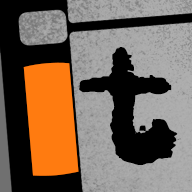Anamorphic lenses do, in a way, allow you to see a little more on either side of the frame. They can be, however, quite expensive to rent, plus you need to shoot in a 4:3 format to get the best resolution out of them (ie 4-perf S35).
With 35mm, you can actually shoot 4-perf, 3-perf and 2-perf. In traditional 35mm and S35, You capture an image 4 perforations high which captures an image area with a 4:3 aspect ratio. Films used to be projected in 4:3. But then, television came along and people were worried that no-one would go to the cinema because they could sit at home and watch television. Hence the introduction of widescreen as a point of difference to traditional television.
With a 4:3, 4-perf film, you would crop an image to get a wide aspect, allowing you some re-framing room top and bottom, but also throwing away a lot of unused information. To combat this quite a few things have happened over the years.
1 is anamorphic lenses, which give you the highest quality as they use the entire 4-perf frame size to give you a widescreen image when you de-squeeze. Anamorphic lenses can be very expensive to rent, a little temperamental, they have strange focal planes, and they flare all over the shop. Some people like it, some hate it. Some people hate it but like the aspect ratio.
SO, then you have 3-perf, which only shoots 3 perforations high. That allows you to frame up and shoot in 1.77:1, otherwise known as 16:9. This is what most television shows that originate on 35mm shoot as it is native aspect for HDTV. This gives you no re-framing room, but it also means you save 25% on film stock, as you're not throwing away any of the image when you re-frame. You therefore also save 25% on processing/telecine costs. It's also quite close to 1.85:1 aspect ratio which is why feature films can, and do shoot 3-perf to save money on film costs.
You then also have 2-perf, which only shoots 2 perforations high and therefore gives you an aspect ratio of 2.40:1. 2-perf is not as high quality/resolution as de-squeezed anamorphic, but the argument is: can a general audience really notice?
With 2-perf, you not only save 50% on film stock, processing and telecine costs as you're only using half the amount of film, but you also save a lot of money on lens rental as you can use standard spherical lenses and still get a native 2.40 aspect ratio.
With digital, because the majority of digital sensors are 16:9, you can't really use anamorphic lenses properly so the easiest way is to simply crop the image. If you do use anamorphic lenses on a 16:9 sensor, it gives you an image that is 'too wide' (something like 3.55:1), and so you need to crop both top and sides to get back to a 2.40:1 aspect ratio which brings your resolution/quality down and as you're often already at 1920x1080, bringing your resolution/quality down is often not desireable.
The only digital camera I know of that has a 4:3 sensor is the Arri Alexa Studio, and in that case you could technically use normal anamorphic lenses on it and get the right aspect on de-squeeze, or go the more traditional 35mm 4-perf route of shooting everything then cropping and allowing for re-framing.


